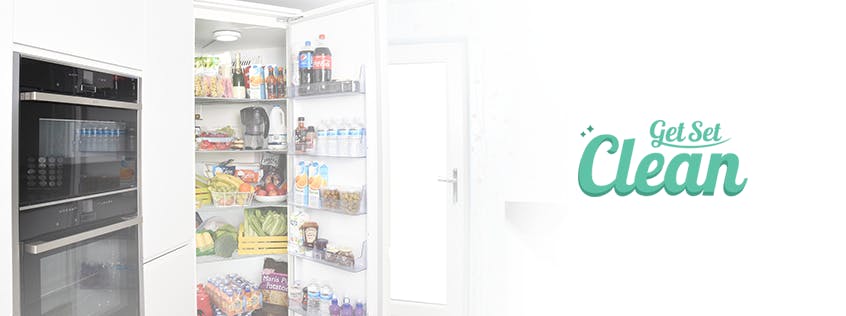
How to stop dreading about cleaning up the fridge
Forgotten veggies squished and squashed, pasta sauce splatters, strawberries or watermelon drizzles – if only your fridge could talk… And if only the show behind the closed door would purely be a matter of aesthetics… But you see, bacteria is swirling in there and odours that make you snort with indignation when you’ve ignored the issue of cleaning up the fridge for much too long.

Effective Fridge Cleaning Routine: Step-by-Step Guide
Our advice? Make the fridge cleaning and sanitation a routine, so that:
- It will always take less time;
- You won’t risk developing any food poisoning;
- You will make sure the mould won’t thrive;
- And you’ll spend less on food, as you’ll always keep an eye on what you have.
Go down this road and you’ll never feel sorry for doing so. Just clean it up when it’s at its emptiest, so you won’t have to worry what you do with the food in it while you keep it unplugged. Also, it is best if you switch its temperature knob to Off before the actual clean-up, just to be on the safe side.
When you’re ready, you need to do it right: on the inside and on the outside, from the top to the bottom. Refrain from using disinfectants (bleach in particular), to avoid the risks of having your food come into contact with it and suffer from ingesting chemicals.
The short version is:
- You use specially formulated products or just natural, homemade cleaners
- You start at the top of the compartment, making sure that the traces of food or dirty water that you discard in the process won’t drip on any clean surface
- And you take advantage of this fridge cleaning routine to organise all the remaining foods and make it all more visible
What natural ingredients can you use to clean your fridge safely?
We’ve talked on our blog about natural cleaning products so many times before. As you can expect, baking soda is still a top choice for homemade cleaning solutions. So, when there isn’t too much dirt, suffices to sprinkle it on the surfaces and use a sponge or a damp cloth to wipe it.
To get rid of the smells, it also helps using a cloth soaked in equal parts of water and vinegar, to clean all the surfaces. Also, a cotton ball scented with some vanilla oil can freshen up any stale compartment in an instant.
For stubborn stains of dried food traces, or worse, when you have mould, a paste of salt and vinegar will do the trick. You can let it sit on the stains for a few minutes before you start the scrubbing.
As a nice trick to ease your work, you could place a pot with hot water inside and keep the door closed for a while. The vapours will moist all the surfaces and it should be easier for you to clean it up afterwards.
As for the fittings, a toothbrush with some toothpaste will do a nice job. Speaking of the toothbrush, you can also use it to clean the brackets and gaskets, this time with a paste made of baking soda and water.
A special tip to keep in mind with fridge cleaning…
Don’t forget the water drain!
That tiny access hole into the water drainage channel can be easily spotted at the bottom of the back of the fridge wall.
Clean the area of food debris, carefully, to make sure it won’t get clogged. And after getting rid of all the dirt, you can pour a teaspoon of baking soda into the drainage channel and pour up to 200 ml of warm water inside, using a syringe. Do this every other 2 or 3 months!
After you clean the fridge on the inside, you should make sure that it’s all dried out before you close the door and start taking care of the outer parts. Of course, you can dab it with a clean cotton towel or just paper towels, you don’t need to wait until it dries out on its own.
As for the outside of the fridge, insist on the handle – everybody puts their hands on it every day, hands that are not always clean – and on the coils! Vacuuming the coils from the back of the fridge is something you should do at least three times a year.
To ease your job even more in the future…
- Cleaning it regularly will make it easier.
- Check regularly for what’s inside, to reduce the risk of food getting spoiled.
- Clean the spills as soon as you see it.
- And don’t forget to keep a box filled with baking soda at the bottom of the fridge.
There are even special fridge odorizers that you can try, to absorb any strong smell.
If you liked these tips for cleaning up the fridge, we have some other, on how to keep your entire kitchen clean with a super-fast, 20-minute weekly cleaning routine.
If you want to avoid the knackering task of cleaning up your home yourself, you can choose a trusted cleaning company in London, and let professionals handle the cleaning for you, while you enjoy more spare time to spend as you see fit.



